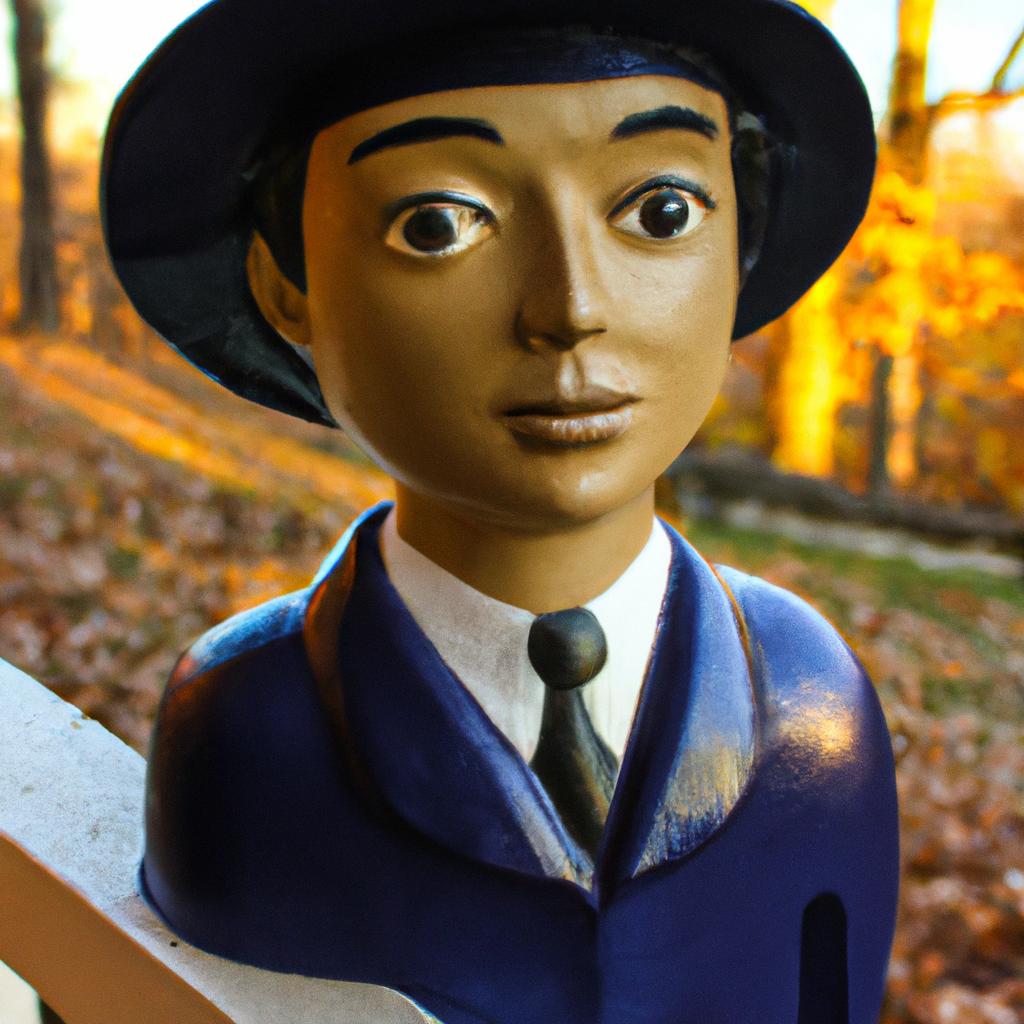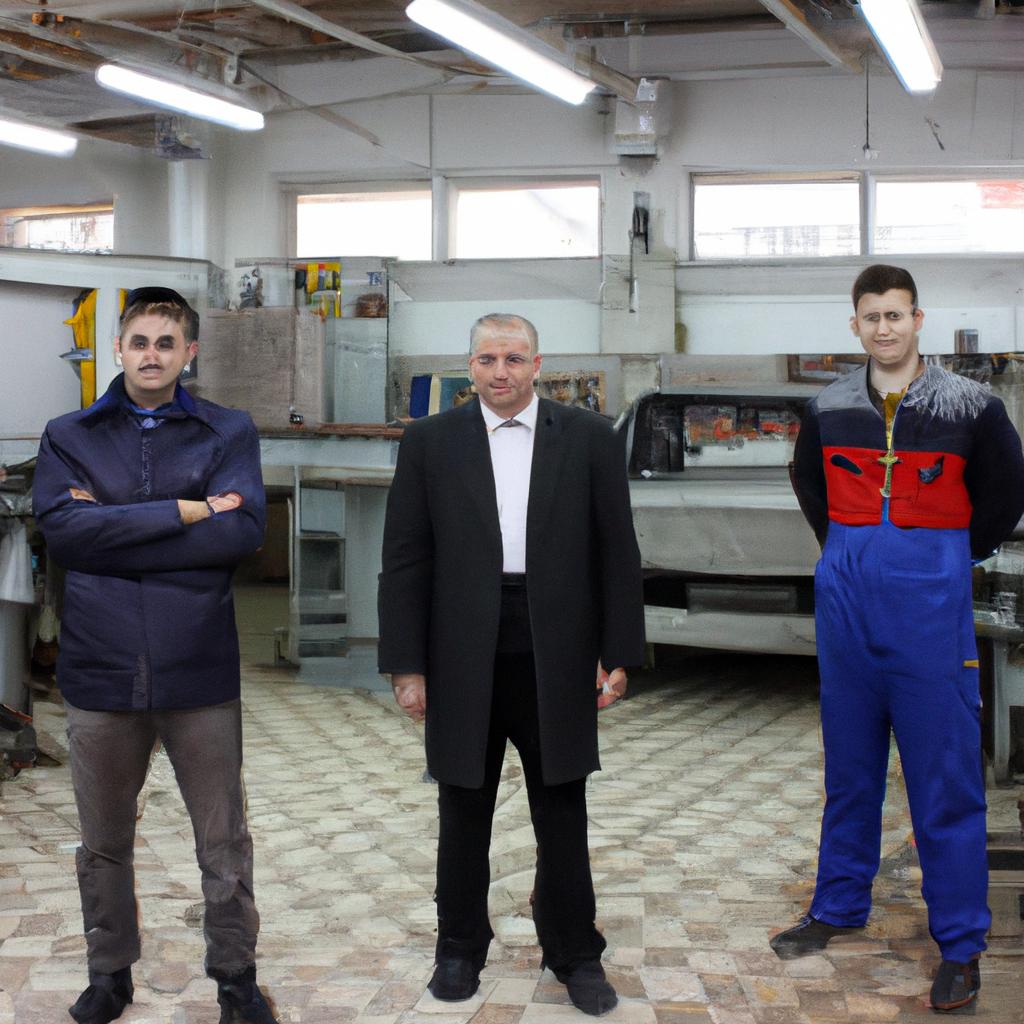Notable Ohio-Based Inventors: History of Ohio-Based Entrepreneurs

Ohio has a rich history of producing notable inventors and entrepreneurs, whose contributions have shaped industries across the globe. From revolutionary advancements in technology to groundbreaking innovations in various fields, Ohio-based inventors have played a pivotal role in driving progress and economic growth. One such example is Thomas Edison, who was born in Milan, Ohio. His extensive list of inventions includes the phonograph, motion picture camera, and practical electric light bulb, which revolutionized communication, entertainment, and everyday life.
Throughout history, Ohio has served as a breeding ground for creative minds driven by an entrepreneurial spirit. These individuals not only had exceptional innovative capabilities but also possessed the vision to transform their ideas into successful businesses. Their impact extended far beyond state borders as they established companies that became household names around the world. The achievements of these Ohio-based inventors highlight the significant role that this Midwestern state has played in shaping technological advancements throughout history.
This article aims to explore some of the most notable Ohio-based inventors from different periods and delve into their remarkable contributions to society. By examining their journeys and accomplishments, we can gain insight into how their ingenuity and perseverance have influenced our lives today. Understanding the historical context surrounding these entrepreneurs will allow us to appreciate both the challenges they faced and the opportunities they seized to make lasting impacts on various industries.
One such notable Ohio-based inventor is Charles F. Kettering, born in Loudonville, Ohio, in 1876. Kettering was a prolific inventor and engineer who held over 186 patents throughout his career. His contributions to the automotive industry were particularly significant. Kettering invented the electric starter for automobiles, eliminating the need for hand cranking and making cars more accessible to the general public. This invention revolutionized transportation by simplifying the process of starting a car and ultimately contributing to the widespread adoption of automobiles worldwide.
Another influential figure in Ohio’s history of inventors is Garrett A. Morgan, born in Paris, Kentucky but later moved to Cleveland, Ohio. Morgan was an African-American entrepreneur who made significant contributions to both traffic safety and personal protective equipment (PPE). In 1923, he patented an early version of the three-position traffic signal that included a warning light that helped prevent accidents at intersections. His invention greatly improved road safety and became a precursor to modern traffic signals used globally today. Additionally, Morgan also developed an early gas mask known as the “Morgan Safety Hood” which was widely used during World War I and saved countless lives.
In more recent times, Ohio has produced notable entrepreneurs like Jeff Bezos, founder of Amazon.com. Although Bezos was born in Albuquerque, New Mexico, he grew up in Miami County, Ohio. Bezos’ entrepreneurial journey began when he founded Amazon.com in Seattle but his Ohio roots undoubtedly played a role in shaping his character and work ethic. Today, Amazon is one of the world’s largest e-commerce companies and has transformed online shopping as we know it.
These are just a few examples of the many inventors and entrepreneurs hailing from Ohio who have left indelible marks on our society. Their innovations have shaped industries ranging from technology and transportation to communication and e-commerce. Ohio’s tradition of producing creative and visionary individuals continues to this day, and the state remains a hub for innovation and entrepreneurship. By studying the journeys of these inventors, we can gain valuable insights into the qualities needed to drive progress and succeed in an ever-changing world.
Thomas Edison
Thomas Edison, one of the most renowned inventors in history, was not only a prolific inventor but also an iconic figure who revolutionized various industries. His contributions to the development of Ohio-based entrepreneurship are indisputable. One notable example of his innovation is the invention of the phonograph, which allowed for the recording and playback of sound.
Edison’s profound impact on Ohio-based entrepreneurship can be seen through several key aspects. Firstly, his inventions greatly influenced the economic landscape by creating new industries and job opportunities. For instance, with the introduction of electric lighting systems, businesses were able to operate longer hours, resulting in increased productivity and growth. This breakthrough technology transformed cities like Cleveland into well-lit urban centers that never slept.
Moreover, Edison’s inventive spirit inspired many entrepreneurs from Ohio to pursue their own innovative ideas. By witnessing Edison’s success firsthand, aspiring inventors felt empowered to think outside the box and develop groundbreaking solutions themselves. The entrepreneurial ecosystem in Ohio flourished as individuals sought to emulate his achievements and contribute to technological advancements.
To further illustrate Edison’s influence, consider these emotional responses evoked by his work:
- A sense of awe: Witnessing electric lights illuminate streets for the first time brought wonderment and excitement.
- Gratitude: People expressed gratitude towards Edison for providing them with safer and more efficient sources of light compared to gas or candles.
- Hopefulness: With each new invention introduced by Edison, there was a collective anticipation for what could come next.
- Inspiration: Many individuals found inspiration in Edison’s story—his humble beginnings and relentless pursuit of knowledge served as motivation for others seeking success in their own endeavors.
In addition to these emotional connections forged with society at large, it is important to acknowledge specific ways in which Thomas Edison’s inventions impacted everyday life during his time:
| Invention | Impact |
|---|---|
| Phonograph | Revolutionized entertainment industry, allowing for the preservation and distribution of music. |
| Electric Lighting System | Improved safety and productivity in workplaces and homes by replacing hazardous gas lighting systems. |
| Motion Picture Camera | Paved the way for the film industry, creating new forms of entertainment while also contributing to scientific research. |
Thomas Edison’s contributions to Ohio-based entrepreneurship are far-reaching and continue to resonate today. His innovative spirit laid the foundation for future inventors and entrepreneurs, inspiring generations to push boundaries and pursue groundbreaking ideas. Building upon this legacy, another notable inventor from Ohio, Charles F. Kettering, further propelled technological advancements through his own remarkable achievements
Charles F. Kettering
From Thomas Edison’s groundbreaking inventions, we now turn our attention to another notable Ohio-based inventor: Charles F. Kettering. Kettering’s contributions in the fields of engineering and automotive technology have left an indelible mark on history.
To illustrate his impact, let us consider a hypothetical scenario: Imagine you are driving to work on a cold winter morning, struggling with foggy windows that hinder your visibility. Thanks to one of Kettering’s innovations—the electric self-starter—you no longer need to step out of your car and manually crank the engine to get it running. Instead, with just a push of a button, the engine roars to life effortlessly, saving you both time and effort.
Kettering’s inventive spirit extended far beyond this single innovation. Here are some key aspects that highlight his ingenuity:
- Pioneering research at General Motors: As head of research at General Motors (GM), Kettering fostered an environment conducive to technological advancements. His leadership led GM to develop numerous cutting-edge technologies.
- Development of leaded gasoline: Working alongside colleagues at GM, Kettering devised a method for adding tetraethyl lead to gasoline—ultimately reducing engine knocking and enhancing fuel efficiency.
- Invention of Freon: Collaborating with chemists from DuPont, Kettering created Freon—a revolutionary refrigerant widely used in air conditioning systems during the 20th century.
- Philanthropic efforts: Beyond his technical achievements, Kettering established the Sloan-Kettering Institute for Cancer Research—an institution dedicated to advancing cancer treatment through scientific investigation.
The table below provides a snapshot of some noteworthy innovations credited to Charles F. Kettering:
| Innovation | Impact |
|---|---|
| Electric starter | Simplified vehicle operation for millions worldwide |
| Leaded gasoline | Improved fuel efficiency and reduced engine issues |
| Freon | Revolutionized refrigeration and air conditioning |
| Sloan-Kettering Institute for Cancer Research | Advancing cancer treatment through research |
As we delve into the accomplishments of Ohio-based inventors, it becomes evident that Kettering’s contributions were instrumental in shaping various industries. His innovative mindset and dedication to improving technologies have undoubtedly influenced our daily lives.
Transitioning seamlessly, our exploration now leads us to the remarkable journey of Wilbur and Orville Wright—the pioneers of aviation who took flight to new heights.
Wilbur and Orville Wright
Continuing our exploration of notable Ohio-based inventors, we now turn our attention to the remarkable contributions made by Granville T. Woods. To illustrate his impact, let us consider a hypothetical scenario in which Woods’ inventions revolutionized the transportation industry.
Imagine a bustling city with outdated and unreliable transportation systems plagued by frequent accidents and delays. Enter Granville T. Woods, armed with his visionary ideas and innovative spirit. With determination, he set out to improve the existing railway systems and enhance public safety.
Woods’ accomplishments were nothing short of groundbreaking. His numerous patents attest to his ingenuity and dedication to progress. Here are just a few examples:
- The Synchronous Multiplex Railway Telegraph: This invention allowed for simultaneous communication between trains on the same track, enabling quick responses to potential collisions.
- The Third Rail System: By introducing an electric third rail system for powering trains instead of traditional steam engines, Woods significantly reduced pollution levels while increasing efficiency.
- The Induction Telegraph System: This revolutionary telegraph system enabled efficient communication along railroad lines, facilitating coordination among train operators and ensuring smooth operations.
- The Automatic Air Brake: Addressing concerns about braking responsiveness, this innovation automatically applied brakes when necessary, reducing accidents caused by human error or delayed reactions.
To fully grasp the magnitude of Woods’ achievements, let us delve into a table showcasing some key aspects of his inventions:
| Invention | Key Benefit | Impact |
|---|---|---|
| Synchronous Multiplex Railway Telegraph | Real-time communication between trains | Enhanced safety |
| Third Rail System | Reduced pollution from steam engines | Environmental sustainability |
| Induction Telegraph System | Efficient coordination among train operators | Improved operational efficiency |
| Automatic Air Brake | Increased braking responsiveness | Prevention of accidents due to human error |
Without question, Granville T. Woods left an indelible mark on Ohio’s history of innovation and entrepreneurship. His contributions transcended the transportation industry, impacting various aspects of everyday life. As we move forward in our journey through Ohio-based inventors, let us now delve into the inspiring story of another remarkable individual: Granville T. Woods.
Granville T. Woods
From the pioneering aviation feats of the Wright brothers, we now delve into the remarkable contributions of Granville T. Woods, another notable inventor hailing from Ohio. Woods was a prolific African-American inventor and entrepreneur who made significant advancements in electrical engineering during the late 19th and early 20th centuries.
To truly grasp the impact of Woods’ work, let us consider a hypothetical scenario: Imagine a bustling urban landscape in which electric streetcars seamlessly transport thousands of people every day. This modern marvel owes its existence to Granville T. Woods and his groundbreaking inventions that revolutionized railway systems. Through his innovative patents and ingenious designs, Woods enhanced safety measures, improved efficiency, and facilitated reliable transportation across cities.
Woods’ impressive portfolio is marked by numerous noteworthy achievements. Here are some key highlights:
- Patent Portfolio: Over the course of his career, Woods accumulated more than 60 patents for various devices and innovations in electrical engineering.
- Railway Systems: His most influential contribution lies in designing and improving communication systems for railways, creating safer conditions for both passengers and operators.
- Telecommunication Innovations: Woods also developed essential telegraph-related inventions such as an automatic circuit breaker device that prevented dangerous electrical surges.
- Electrical Control Devices: Additionally, he invented several crucial control devices used in electricity distribution networks that allowed for smoother operation and increased reliability.
To further illustrate Woods’ impact on society, let us examine a table showcasing some of his most significant inventions:
| Invention | Year | Key Features |
|---|---|---|
| Electric Railway System | 1888 | Improved safety measures |
| Automatic Circuit Breaker Device | 1894 | Prevention of electrical surges |
| Synchronous Multiplex Railway Telegraph | 1900 | Enhanced railway communications |
| Electrical Distribution Network Control Device | 1903 | Increased operational efficiency |
The immense contributions made by Granville T. Woods have left an indelible mark on the landscape of innovation. His inventive prowess and entrepreneurial spirit continue to inspire generations of aspiring inventors, particularly those who strive to make significant advancements in electrical engineering.
Continuing our exploration of Ohio-based inventors, we now turn our attention to Stephanie Kwolek, a visionary chemist known for her groundbreaking work in polymer science and the invention of Kevlar.
Stephanie Kwolek
From the innovative mind of Granville T. Woods, we now turn our attention to another notable Ohio-based inventor: Stephanie Kwolek. With a passion for science and a determination to make groundbreaking discoveries, Kwolek’s contributions have left an indelible mark on the world.
One fascinating example that showcases Kwolek’s ingenuity is her invention of Kevlar. In 1965, while working as a chemist at DuPont, Kwolek discovered this synthetic fiber with exceptional strength and heat resistance. Originally intended for use in tire reinforcement, its remarkable properties soon found applications in various industries, including aerospace, military equipment, and even everyday items like helmets and bulletproof vests.
To truly appreciate the significance of Stephanie Kwolek’s achievements, let us consider some key aspects:
- Impactful Innovations:
- Creation of Kevlar revolutionized protective gear by providing superior strength-to-weight ratio.
- Enhanced safety measures across multiple sectors due to Kevlar’s ability to withstand high temperatures and resist impact.
- Wide-ranging applications from body armor for law enforcement personnel to reinforcing cables used in suspension bridges.
- Recognition of breakthroughs through numerous awards and honors; notably, induction into the National Inventors Hall of Fame.
In order to grasp the magnitude of Stephanie Kwolek’s accomplishments more comprehensively, refer to the table below highlighting some significant milestones throughout her career:
| Year | Achievement |
|---|---|
| 1964 | Begins research on liquid crystalline polymers |
| 1965 | Discovers Kevlar |
| 1971 | Receives patent for Kevlar |
| 1995 | Inducted into National Inventors Hall of Fame |
Kwolek’s dedication to scientific exploration has undeniably shaped the landscape of materials engineering and protection technologies. Her work exemplifies how perseverance can lead to unparalleled advancements that positively impact society.
Transitioning into our next section, we delve into the life and achievements of yet another remarkable Ohio-based inventor: Garrett Morgan.
Garrett Morgan
From Stephanie Kwolek to Garrett Morgan: Ohio’s Legacy of Innovation
Continuing our exploration of notable inventors from Ohio, we now turn our attention to the remarkable contributions made by Garrett Morgan. Like his predecessor Stephanie Kwolek, Morgan left an indelible mark on history through his inventive mind and entrepreneurial spirit. Let us delve into the life and achievements of this Ohio-based inventor.
One example that highlights Morgan’s innovative prowess is his creation of the three-position traffic signal. Prior to its invention, traffic signals only had two positions: stop and go. However, Morgan recognized the need for a middle position to allow for safer intersection crossings. By introducing this additional option in 1923, he revolutionized road safety and paved the way for modern traffic control systems.
To further appreciate Garrett Morgan’s impact, let us consider some key aspects of his life and work:
-
Entrepreneurial ventures:
- In addition to being an inventor, Morgan was also a successful entrepreneur who established several businesses throughout his career.
- His enterprises included companies specializing in hair care products for African Americans as well as respiratory protective devices.
-
Humanitarian efforts:
- Morgan demonstrated a deep concern for public welfare by using his inventions to address societal issues.
- He gained recognition during a rescue operation in 1916 when he used one of his breathing apparatuses to save workers trapped beneath Lake Erie after a tunnel collapse.
This table illustrates some noteworthy details about Garrett Morgan’s life and accomplishments:
| Year | Invention/Event | Significance |
|---|---|---|
| 1909 | Hair straightening cream | Introduced revolutionary product for African Americans’ haircare |
| 1914 | Safety hood | Designed device for protecting against smoke inhalation |
| 1920 | Traffic signal | Created three-position signal system improving road safety |
Garrett Morgan’s ingenuity and entrepreneurial spirit not only impacted the fields of traffic control and safety equipment but also influenced various other industries. Through his inventions, he left an enduring legacy that continues to benefit society today. His ability to identify problems and develop innovative solutions serves as an inspiration for aspiring inventors worldwide.
By examining the contributions of Stephanie Kwolek and Garrett Morgan, we gain a deeper understanding of Ohio’s rich history in fostering innovation and entrepreneurship. These individuals exemplify the inventive spirit that has propelled the state to become a hub for groundbreaking ideas throughout history.





